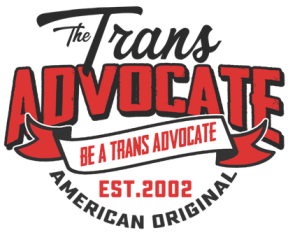By M.A.Melby
@mamelby
If you’re of my generation and grew up in the U.S., you’ll remember the movie “Kindergarten Cop” where a gruff police officer goes undercover as a Kindergarten teacher. At one point, one of his students raises his hand and blurts out “Boys have a penis and girls have a vagina”. At the time, publicly discussing genital anatomy, much less discussing genital anatomy with other people’s children, was incredibly taboo. So, the audience recognized the awkwardness of the situation and found it funny.
Recently, a mother wrote a letter to an advice column because she found herself in a similar situation. Her 6-year-old daughter approached her and asked, “Do I have a vagina?” and she felt the same discomfort. I can identify with that, several years ago a 5-year-old girl pointed at my belly and asked me, while I was very pregnant, “How did the baby get in there?” Knowing what to say in those situations is not always completely clear. Among several suggestions, the columnist advised the letter writer to have that Kindergarten Cop moment:
For instance, I can’t think of any reason why a child shouldn’t know the name of genitalia in the same way they know nose, mouth and armpit. Girls have a vagina. Boys have a penis. That’s accurate information and if you are matter-of-fact about it, they will be, too.
The main problem with the advice, is that it is simply not true. Though it may not be appropriate to explain to a child every multi-faceted detail surrounding taboo subjects, saying something that is inaccurate is not the only alternative. You may call the earth “round” instead of an “oblique spheroid” but should probably avoid calling it a “circle” or “cube”.
Not all girls have a vagina and not all boys have a penis. Saying that they do is wrong.
Though it may be tempting to erase intersex and transgender people when discussing gender and anatomy with children on the basis of “age appropriateness” or simplification, doing so is unnecessary. It is true that young children have difficulty understanding ambiguity and abstract concepts, but that issue is not relevant. The names we used to identify anatomy and what genitals tend to look like, is not abstract; and making generalizations is unnecessary to the explanation.
What tying “penis” to boys and “vagina” to girls do is make genitalia part of what defines a “boy” and a “girl” for the child. Children are in the cognitive stage where they trust authority to define what things are, what is right and wrong, and what the fundamental models of the universe are. Those early models and definitions, if reinforced, become robust and are very difficult to reassess even into adulthood. I think that most parents intuitively understand this. For example, would these phrases be appropriate?
Girls are weaker than boys.
Boys are taller than girls.
Girls have babies.
Boys have short hair.
Girls don’t become scientists.
These statements, though “accurate information” on average, may encourage children to form a toxic essentialist view of “girls” and “boys” and become very confused and upset when these rules are violated. For example, reinforcing the idea that “girls have babies” may contribute to the feelings of failure or shame that some women experience for being unable or unwilling to bear biological children. Saying that “girls are weaker than boys” and “boys are taller than girls” may contribute to feelings of inadequacy in men who are not physically strong or tall and reinforce the denigration of girls and woman as the smaller, lesser sex.
That is why many parents avoid saying those things.
Unfortunately, the majority has been conditioned from childhood to see a “girl” as someone with a vagina who likes boys and a “boy” as someone with a penis who likes girls, and that they “special hug” and have babies. Inaccurate generalizations about what a girl and a boy are supposed to be “biologically” is the pseudo-scientific-standard for imposing cis-heteronormativity on all of society. The phrase “Boys have a penis and girls have a vagina,” is the “free space” in the middle of every gay-rights activist and trans-rights activist’s having-an-argument-with-a-bigot bingo card.
Why? Because it is not easy to reject a “rule” that has been communicated by authority and reinforced over-and-over again from the time that a child is starting to learn a language. Breaking down those early fundamental models requires a level of cognitive dissonance that many people actively avoid – and are therefore resistant to.
These essentialist messages negatively affect everyone, but the pervasiveness of the Kindergarten Cop mentality is particularly damaging to those who don’t fit into those inauthentic constraints. Imagine how a transgender child might internalize these messages, and the pain it might cause them.
I have two young children of my own. I can tell my older son, who is also 6-years-old, that he has a penis and so does his brother and so does his daddy, but I do not. I can explain to him that it is not polite to ask someone about their genitalia and most people consider genitals private. I can tell him that most boys have penises and most girls don’t, but not everyone is the same. Somehow, my not insisting that penis=boy and vagina=girl has not spun him into a whirlwind of confusion or social disadvantage.
I hope that if he ever raises his hand in Kindergarten and reenacts that old 90’s movie, that his teacher would let me know so that I can discuss it with him, which, as the advice columnist suggested:
“…lessens the chance of kids getting inaccurate or frightening information…”
